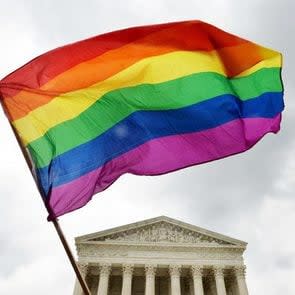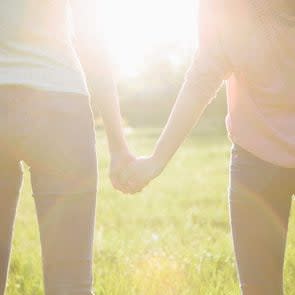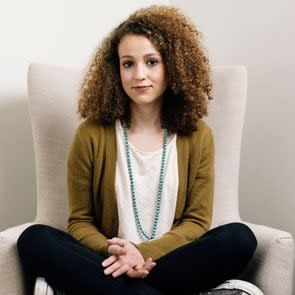What Does LGBTQ Stand For?
Although most people in the LGBTQ community probably can recite with minimal effort the words represented by each letter of the acronym that unites it, for some, the meaning of LGBTQ remains a head-scratching puzzle. So, what does LGBTQ stand for? It’s simple and complicated, at once specific yet eternally fluid. To understand the acronym, it’s important to understand the varied components of the LGBTQ community—how they are similar and how they are different.
The acronym recognizes what sets apart individuals who identify as falling under the LGBTQ umbrella—both from each other and from everyone else—while bringing them all together. It’s distinction and solidarity in five letters. To celebrate and to better understand those five letters not just during Pride Month but all year long, you’ll want to take a look at the best LGBTQ books, LGBTQ movies, and LGBTQ quotes. No matter how you identify, they’re sure to enlighten, entertain, and inspire you.
What do the individual letters of the acronym mean?
So, let’s get right to it: What does LGBTQ stand for? As far as the alphabet is concerned, the LGBTQ meaning is fairly straightforward. The individual letters represent Lesbian, Gay, Bisexual, Transgender, and Queer (or Questioning). Although gay men have been more visible in the movement and in media and have received most of the LGBTQ attention since the 1969 Stonewall Riots, the placement of L at the beginning of the acronym is significant and intentional. It’s a gesture of appreciation for the lesbian community, which has played a large if sometimes overshadowed, role in the push for equality. These women stood right alongside gay men when few others would, especially in the ’80s and ’90s as AIDS was decimating the gay community. Lesbians have been among the staunchest LGBTQ activists and notable public figures.
“The letters are not a rank ordering, but it’s been a way of trying to recognize a group that faces an intersection of oppression, both of sexism and of homophobia,” says Ross Murray, senior director of the Gay and Lesbian Alliance Against Defamation (GLAAD) Media Institute.
How did LGBTQ come to be?
The term homosexual is believed to have been coined by Hungarian journalist Karl-Maria Kartbeny in the mid-19th century, but it came to be regarded as somewhat limited and even derogatory. So-called sexual orientation and sexual identity are about so much more than sex, and over time, homosexual—and especially its shortened form— fell far out of favor. “That homosexual term was something that was used to talk about us, not us talking about ourselves,” says Murray, who cites the need for the community to distance itself from the word’s “very clinical, medicalized focus” as a determining factor in its ouster from the community’s lexicon.
Gay, a more neutral-sounding and less-loaded synonym, debuted in the Oxford English Dictionary as a slang for homosexual in 1951. By mid-decade, it had become the more socially acceptable term, for both men and women. Meanwhile, the word lesbian, derived from the Greek island of Lesbos—whose most famous citizen, Sappho, wrote love poems to other women—became accepted as the strictly female equivalent as the feminist movement took hold in the 1970s. As gay men and women fought together for equality, it was only a matter of time before the words that described them were united as well, driving LGBTQ meaning and influence.
How has the acronym changed over time?
In the beginning, there was the word gay. It was a sort of catchall term that encompassed both men and women with same-gender sexual orientation. In the mid to late ’80s, the short acronym LGB came into usage as an exclusive umbrella for lesbian women, gay men, and bisexual people. At the end of the following decade, “T” was added to signify the inclusion of transgender people in the LGB community, making it LGBT (and sometimes GLBT). “There’s a lot of overlap, and [transgender people] face a lot of the same struggles,” says Murray of the T in LGBTQ. “There are differences and nuances, but that source of oppression comes from the same place.”
Over the past decade, as more people have begun to identify as “queer,” a word that once had a derogatory connotation, “Q” was added to the acronym. The designation is somewhat fluid and meant to represent people who are not heterosexual or cisgender but may not specifically identify with any of the categories represented by LGBT. Other letters are sometimes added (such as I for Intersex, A for Asexual and Ally, and P for Pansexual), as well as a simultaneously inclusive and vague “+” (as in LGBTQIA+). But for now, LGBTQ is the widely accepted community standard, representing one large community waving the same rainbow flag. Speaking of which, here’s how the rainbow became the symbol for LGBTQ pride.
Why is LGBTQ important?
LGBTQ reflects the diversity of the community. It may be a bit of a mouthful, but the acronym represents solidarity between different groups that have been ostracized and discriminated against historically because of their sexual or gender identity. It recognizes the intersectionality of the ongoing civil rights struggle, along with the overlapping interests and concerns of the various groups included in LGBTQ. “We are a big, broad, diverse community,” Murray says. “There’s something that binds us together, but we also get to celebrate the ways in which we are distinct and different from one another.”
What does the Q mean?
The Q is perhaps the most misunderstood component of LGBTQ for several reasons. For one thing, it can stand for Questioning, referring to people who are still unsure of their sexual orientation and/or gender identity. It is more commonly understood, however, to stand for Queer, which is a somewhat amorphous designation that includes everyone that falls under the LBGT categories, plus those who aren’t definitively gay, lesbian, bisexual, or transgender but who aren’t straight or cisgender either.
It can even include people who are asexual, pansexual, and polyamorous, as well as those who are straight and cisgender but consider themselves to be strong allies to the community. It lends a degree of fluidity and all-inclusiveness to a movement that is all about inclusion. “Queer can take on a very political connotation: ‘We’re here, we’re queer, get used to it,'” Murray explains, adding that GLAAD added Q to LGBT for the first time in the 2016 edition of its Media Reference Guide. “It can take on an academic connotation in terms of queer theories, in terms of how do I upend the lenses that I’ve used to examine the world. Queer can be used by communities of color that maybe see gay and lesbian and bisexual as White dominant or White constructs. Some people want to use queer because they think LGBTQIA is way too long and complicated. I think it’s a good thing for us, ultimately.”
Opposition to LGBTQ
Despite the pervasiveness of the acronym, there are people within the community who object to LGBTQ. Some argue about what should and shouldn’t be included and whether Q should stand for Questioning or Queer. To others, in trying to be as inclusive as possible, LGBTQ actually ends up excluding. In his 2019 essay for The Atlantic, Jonathan Rauch wrote: “For me, the ugliness and unwieldiness of LGBTQ adds insult to injury. As does the fact that it is not a label that accurately describes me or any other American. It describes a coalition, yes, but not any actual person. Even as it seeks to explicitly include groups, the concatenation of initials implicitly blots out individuals.” He suggested using only the letter Q—which is “simple and inclusive and carries minimal baggage”—to represent LGBTQ meaning. As he saw it, Q could function as a blanket term to encompass the entire rainbow of sexual minorities while sidestepping microcosmic categorization.
Murray, though, sees it differently. “There is no person who is LGBTQ,” he says. “LGBTQ does describe a big, broad, diverse community, and we want to make sure we’re thinking and naming who is included in that community. When we’re talking about people, it’s respectful to learn what’s their sexual orientation, what’s their gender identity, and then honor who they are. We want to honor the individuality while individuals come together and make up a much larger community that’s even diverse in our opinions of how we talk about ourselves.”
Sources:
Ross Murray, senior director of the GLAAD Media Institute
New York Times: “The Decline and Fall of the ‘H’ Word”
The Gayly: “The history of the word ‘gay'”
Pink News: “How has the LGBT+ acronym evolved?”
New York Times: “The ABCs of L.G.B.T.Q.I.A.+”
The Atlantic: “It’s Time to Drop the ‘LGBT’ From ‘LGBTQ’”
Iconic Photos: When Same-Sex Marriage Was Legalized
What Happened When I Came Out
I Was Sent Away for Being Gay
The post What Does LGBTQ Stand For? appeared first on Reader's Digest.



